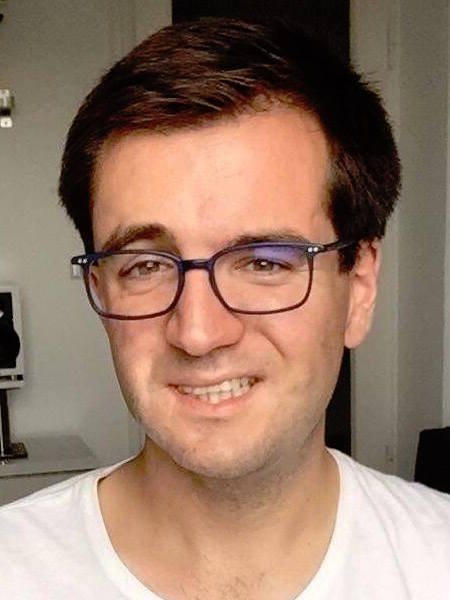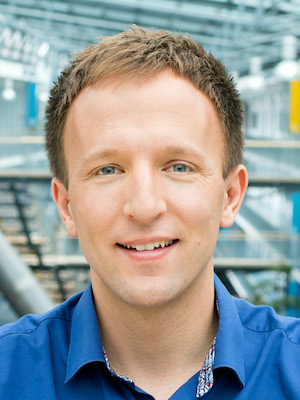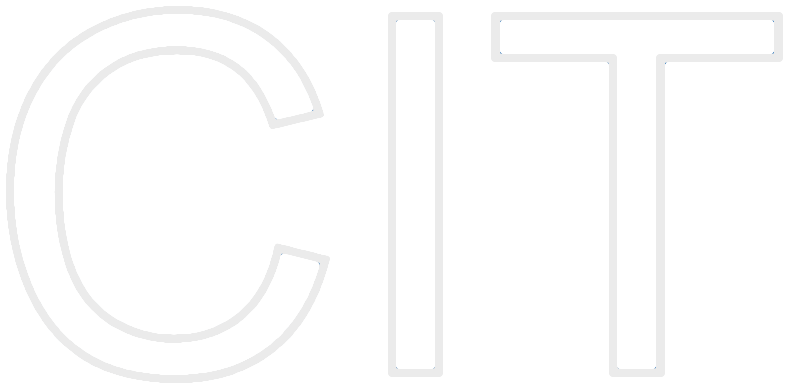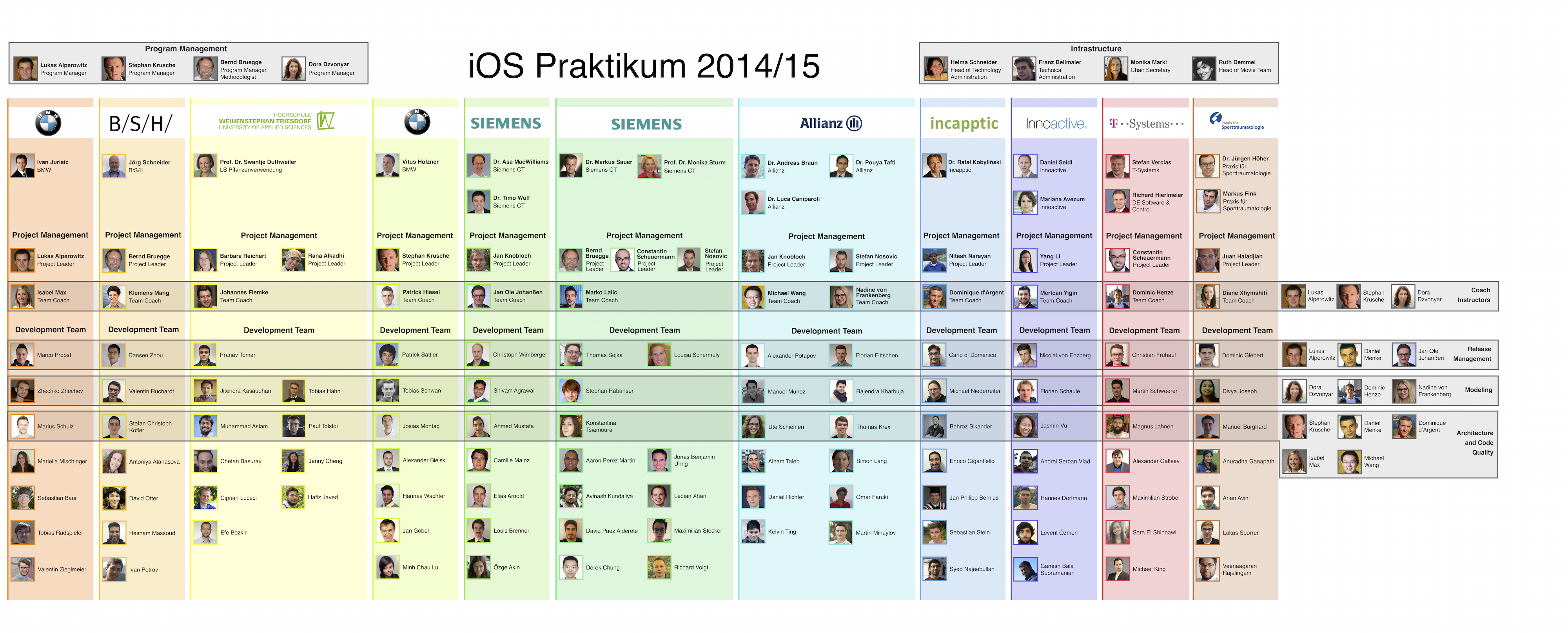Results of the iOS Praktikum WS 14/15
(Lukas Alperowitz, Stephan Krusche, Bernd Bruegge, January 2015)
Results of previous years
Goal
This lab course covers mobile applications for smart devices, ranging from standalone applications, embedded systems including hardware and sensors to the design of modern interfaces for complex business applications. Students learn and apply software engineering and usability engineering techniques. This includes object oriented modeling and system design as well as the realization of graphical user interfaces, usability testing, continuous integration and continuous delivery. Real industrial partners provided the problem statements and acted as clients. 11 companies participated in the iOS Praktikum WS 14/15, each with a different problem statement and its own team. More than 100 students delivered these applications using agile techniques and communicating continuously to their clients.
Project Overview
The following companies participated in the iOS Praktikum WS 14/15. You can find details about the projects including videos of the final presentations and demos. We would like to thank Boinx TV for the continuous support with the video recording!
Program Management
 |
 |
 |
Organization
The chart shows the project based organization of the course. All projects are shown as columns including information about customer, project management and student team. A team of eleven student coaches dealt with the project management of the teams. Furthermore cross-project teams with one member of each team (horizontal bars) dealt with different aspects during the project. The release management team was in charge of the right usage of version control, continuous integration, continuous delivery and feedback management. The architecture team was responsible for the subsystem decomposition and the architectural style of the system. The code quality team kept an eye on the right use of the git branching model and the incorporation of a pull request workflow with asynchronous pair programming. The modeling team was responsible for the documentation and the creation of informal models, i.e. trailer, mockups and UML diagrams to improve the communication of difficult aspects within the team.
Projects
|
|
Project: Agile Factory One of the biggest economic challenges with Industry 4.0 is the establishment of a feedback channel between the customer and the factory. The „Agile Factory“ is a prototype which provides such a channel. It offers constant status updates from the factory to the user and allows him to manipulate his order even during the assembling process. The corresponding “Smart Factory” is equipped with tablets and several geofences to instantly notify the workers about changes in the process. Team members: Constantin Scheuermann (Project Leader), Dominic Henze (Coach), Michael King, Martin Schwoerer, Magnus Jahnen, Christian Fruehauf, Maximilian Strobel, Alexander Galtsev, Sara El-Shinnawi Customer: Dr. Stephan Verclas (T-Systems), Thomas Habschied (T-Systems) |
|
|
Project: iCATCH Passers-by notice it as a Lifass column with a touchscreen on it, but it is much more intelligent than that: it monitors and controls the physical environment and can therefore infer its context. iCATCH will be an essential component of the Smart City project in Vienna´s new district Seestadt Aspern. It can be deployed in different environments such as public places. It offers information to citizens and attracts people to interact with it. Three major use cases have been implemented during the iOS Praktikum: Information, Gaming and Advertisement. The Information service offers interesting details about Points-of-Interest connected with offline navigation. The multi-player Gaming service uses the mobile device of the end user as a controller to collaboratively play a game. The Advertisement service uses contextual information to show advertisements tailored to the user. Team members: Bernd Brügge (Project Leader), Stefan Nosovic (Project Leader), Constantin Scheuermann (Project Leader), Marko Lalic (Coach), Ledian Xhani, Richard Voigt, Jonas Benjamin Uhrig, Thomas Sojka, Louisa Schermuly, Maximilian Stocker, Stephan Rabanser, Avinash Kundaliya, Konstantina Tsiamoura, Kin Shing Chung, David Paez Alderete, Aaron Perez Martin Customer: Prof. Dr. Monika Sturm (Siemens), Bernd Rosauer (Siemens), Markus Sauer (Siemens) |
|
|
Project: Virtual Reality App Launcher Wearing the ZEISS VR ONE headset enables you to immerse yourself in virtual reality in an innovative and yet simple way – you use your smartphone to display the 3D content. But if you are wearing your phone like a pair of goggles, how can you interact with it? In this project the team specified a virtual reality media launcher. The interactive in-app assistant Inno guides users through the 3D environment and explains how they can interact with simple head gestures. The media launcher is the central hub for users to launch VR apps, as well as discover and install new VR ONE apps. Team members: Yang Li (Project Leader), Mertcan Yigin (Coach), Andrei Vlad, Jasmin Hong-Min Vu, Nicolai Enzberg, Ganesh Bala Subramanian, Florian Schaule, Hannes Dorfmann, Levent Oezmen Customer: Daniel Seidl (Innoactive), Mariana Avezum (Innoactive), Michael Rottler (Zeiss) |
|
|
Project: Serious Games for Plant Recognition Landscape architecture students have to learn a lot about plants: How do I recognize a specific plant? What type of soil does it need? The details are endless... The purpose of this project was to build a serious game to support the students in the learning process. The team specified two games. With “iQPlants”, students can learn the properties of certain plants in a quiz-style manner. They can then apply this knowledge in the simulation game "Sprout" where they learn more about the correct place to grow the plants by raising trees in order to save a dying planet. Team members: Barbara Reichart (Project Leader), Rana Alkadhi (Project Leader), Johannes Flemke (Coach), Efe Bozkir, Jenny Cheng, Paul Tolstoi, Tobias Hahn, Hafiz Javed, Muhammad Aslam, Jitendra Kasaudhan, Ciprian Lucaci, Chetan Basuray, Pranav Tomar Customer: |
|
|
Project: KneeHapp 2 The rupture of the Anterior Cruciate Ligament (ACL) is a severe knee injury occurring mainly with to young and active people. An intense rehabilitation period is necessary to go back to regular physical activities. Usually, the doctor and the patient meet four to five times during a year of rehabilitation. The KneeHapp application brings doctor and patient closer, offering the possibility for a continuous remote engagement in the rehabilitation process. The bandage the patient wears assures accuracy by recording the patient’s movements during his the exercises. The iPad receiving data from the bandage assists the patient in measuring the performance and visualizes the results as well as progress over time. The patient forwards the results to the doctor, who accesses them through the DoctorApp app on the iPad or through the corresponding web-based backend. Team members: Juan Haladijan (Project Leader), Diane Xhymshiti (Coach), Veenaagaran Rajalingam, Dominic Giebert, Arian Avini, Lukas Sporrer, Anuradha Ganapathi Rathnachalam, Manuel Burghard, Divya Joseph Customer: Prof. Dr. Jürgen Höher (Praxis für Sporttraumatologie Köln), Markus Fink (Praxis für Sporttraumatologie Köln) |
|
|
Project: Energy Wearhouse The Siemens FAST Warehouse in Florida receives and stores a huge amount of packages. Employees use paper and pen to register incoming and outgoing packages. The scope of this project was to provide a better solution to this cumbersome process by evaluating the use of different wearable devices. The team created the application "iHub" which acts as a framework for connecting many different wearable devices to scan packages. With iHub, barcodes and QR-codes can be scanned using devices like Google Glass, Sony ActionCam, BarcodeScanner and a RingScanner. After confirming the barcode on the output device, the information is stored on a server and is also visible in a web-based user interface or can be looked up with a Smartwatch like the Pebble. Team members: Jan Knobloch (Project Leader), Jan Ole Johanßen (Coach), Louis Brenner, Elias Arnold, Camille Mainz, Christoph Wimberger, Özge Akin, Ahmed Mustafa, Shivam Agrawal Customer: Dr. Asa MacWilliams (Siemens), Dr. Timo Wolf (Siemens), Thorsten Krüger (Siemens) |
|
|
Project: Next Generation B2B App Store A big share of large companies is providing internal-use-only mobile application to their employees. As these apps are internal, they cannot be distributed through public stores like the AppStore. Incapptic Catalog provides an Enterprise App Catalog for in-house use. In this project, we brought this to the next level by introducing extended functionalities such as sharing and recommendations. We also provide the user with a channel to propose his own application ideas through the App Catalog. Team members: Nitesh Narayan (Project Leader), Dominique d'Argent (Coach), Michael Niederreiter, Sebastian Stein, Behroz Sikander, Syed Najeebullah, Jan Philip Bernius, Enrico Gigantiello, Carlo Di Domenico Customer: |
|
|
Project: Retail Analytics BMW Retail Analytics brings the well-established concept of tailored advertisement from the internet to car retailers. The location-aware customer app lets a potential car customer explore the showroom with its interactive elements and logs the user's current location using iBeacons. The analytics backend creates a persona based on this data combined with background information such as age or income. With this persona, the customer is provided with advertisement tailored to his personal preferences. In addition, data scientists can run detailed analytics about the product popularity in a showroom based on the personas. Team members: Stephan Krusche (Project Leader), Patrick Hiesel (Coach), Alexander Bielski, Hannes Wachter, Josias Montag, Tobias Schwan, Jan Göbel, Minh Chau Lu, Patrick Sattler Customer: |
|
|
Project: Digital Showroom This project is the successor of last year's Digital Showroom project together with the B/S/H group. Our system offers a sophisticated event management app as well as a product information viewer for customers of B/S/H showrooms. Both apps are using Apple's Passbook technology to send digital event tickets and product vouchers to customers, which they can use without the need for downloading a dedicated application on their personal devices. The "Temployee" app is mainly used by B/S/H employees to validate digital passes, send new tickets or vouchers and for general sales support. The "SHinE" app is used by customers on borrowed Showroom iPads as an individual digital product information viewer and Showroom event guide. B/S/H employees may also create new events, manage products or invite customers through a web interface. Team members: Bernd Brügge (Project Leader), Klemens Mang (Coach), David Otter, Dansen Zhou, Stefan Christoph Kofler, Valentin Ruechardt, Hesham Massoud, Ivan Petrov, Antoniya Atanasova Customer: |
|
|
Project: Burglary Prevention Wouldn’t you like to instantly find out when someone breaks into your house while you are out?Allianz wants to help you to protect your home by creating a burglary detection system. The system uses a variety of sensors to learn its users' habits and recognize intrusions. The corresponding iPhone app makes it possible to see the status of these sensors and interact with certain smart components in the house. In this prototype we utilize temperature, brightness and movement sensors and combine them with door sensors, proximity mats and a camera. If the system detects an unusual event, it alerts the user, who can choose to remotely view e.g. the camera to see what is going on. Team members: Stefan Nosovic (Project Leader), Jan Knobloch (Project Leader), Nadine von Frankenberg (Coach), Michael Wang (Coach), Daniel Richter, Thomas Krex, Ute Schiehlen, Alexander Potapov, Martin Mihaylov, Simon Lang, Florian Fittschen, Manuel Munoz Lara, Rajendra Kharbuja, Aiham Taleb, Omar Faruki, Kelvin Ting Customer: Dr. Andreas Braun (Allianz), Dr. Pouya Tafti (Allianz), Dr. Luca Caniparoli (Allianz) |
|
|
Project: Accident Assistance Would you know exactly what to do if you have a car accident? The driver most likely needs assistance in this unpleasant situation. The BMW Accident Assistance app supports its users at various stages. At the scene, the user gets guidance on what to do immediately after an accident happened, such as putting up a warning triangle or calling emergency services. It is also possible to document the accident by taking pictures of the scene or creating a sketch of what happened. All necessary information of the European Accident Statement can also be filled out directly inside the application. Finally, the user can transfer the accident report to BMW, his insurance company or other third parties. Team members: Lukas Alperowitz (Project Leader), Isabel Max (Coach) Marius-Daniel Schulz, Valentin Zieglmeier, Sebastian Baur, Marco Probst, Tobias Radspieler, Mariella Mischinger, Zhechko Zhechev Customer: Ivan Jurisic (BMW) |













